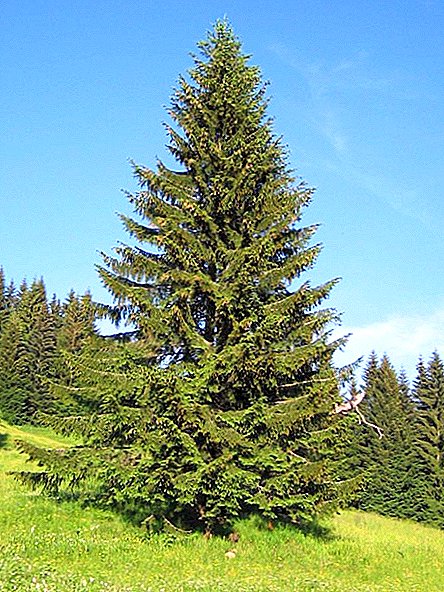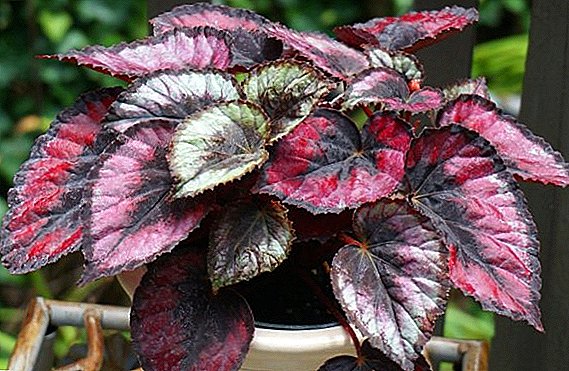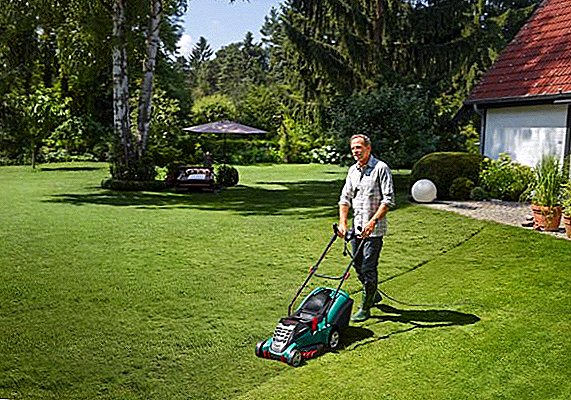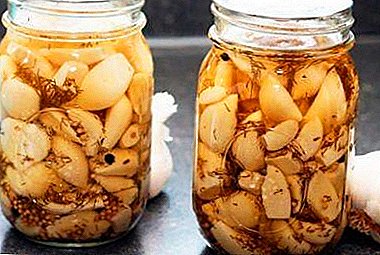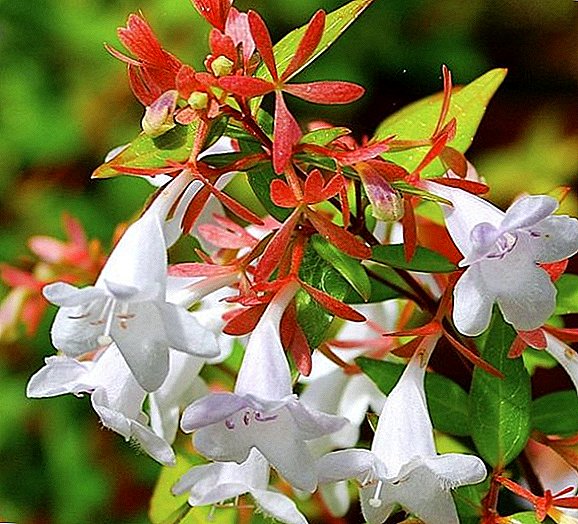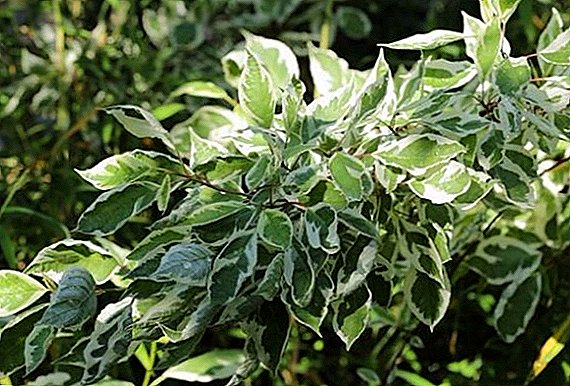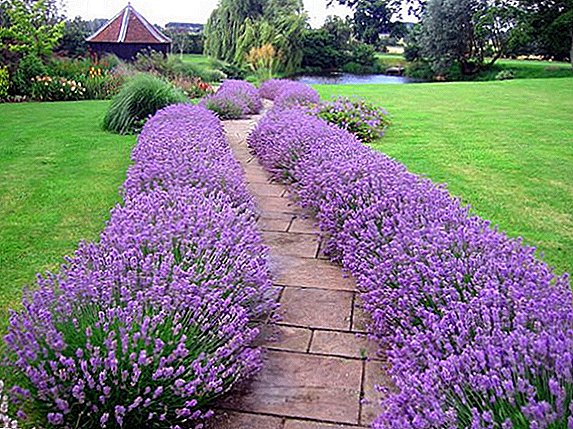 Each summer resident wants to decorate his plot beautifully and with taste. There are many different ways to do this. As an option - rabatka, it is an interesting element of landscape architecture. How to equip it, read on.
Each summer resident wants to decorate his plot beautifully and with taste. There are many different ways to do this. As an option - rabatka, it is an interesting element of landscape architecture. How to equip it, read on.
What it is?
Rabatka - a rectangular flowerbed in the form of a narrow (up to 2-3 m wide) strip along the garden path, fence, fence. It happens with one or several plant species. Most often it has parallel sides. According to the presence of curb rabatki divided into unilateral and bilateral.
There is another type of flower garden, very similar to rabatku - miksborder. But unlike her, he should not be very bright or overly solemn. Both annuals and perennial plants are planted in it.
Did you know? For some colors you can determine the weather for the coming days. On the eve of rain, honeysuckle and yellow acacia exude a stronger smell and attract many insects. Buttercups, mallows and marigolds bow their heads in front of a thunder and look faded. A fern twists its leaves to preserve moisture in the run-up to the dry season.

As a rule, rabatki make out one or several species of plants, which creates stripes of different heights or carpet with a geometric pattern of the same height. But in mixborders not necessarily adhere to this, you can create any composition to your taste. Therefore, at least ten completely different species coexist in the mixborder.
Types of rabatki
Rabatki come in different species, which we will discuss in more detail.
By way of landing
There are several options:
- in the case of a one-sided riddle, the second side is the construction, fence, path. If they are painted in a certain color, it is necessary to take this into account when making a flower bed. Light plants look beautiful on a dark wall and vice versa. If the opposite side of cold shades (gray, blue), flowers should be planted warm (yellow, orange) tones. It is recommended to locate them closer to each other so that the ground is not visible and thus does not spoil the overall picture;
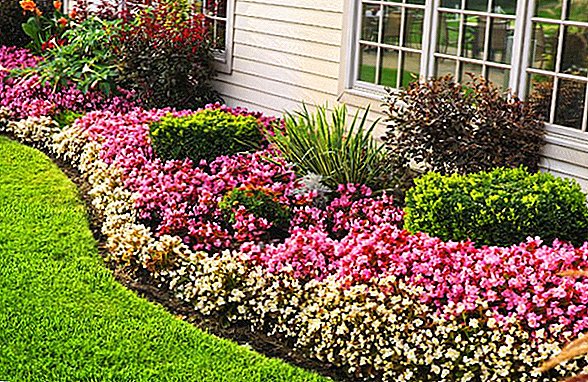
We recommend reading on how to make a beautiful bed of stones and wheel tires.
- bilateral located away from the buildings, in the middle of the garden. They can be from one or several tiers. One tier - the same height of flowers. Several tiers - in the center there are flowers with tall stems, and nearby - with lower ones. It is important to take into account the flowering period of each in order to avoid the appearance of a bare and ugly tier;
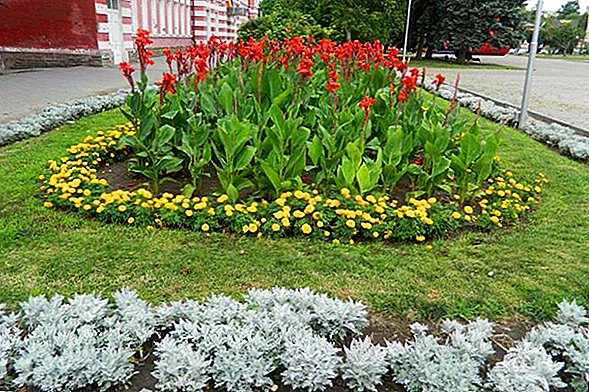
- an intermittent flower bed is divided into rectangular areas, dividing them with tall plants - dahlias, roses, peonies;
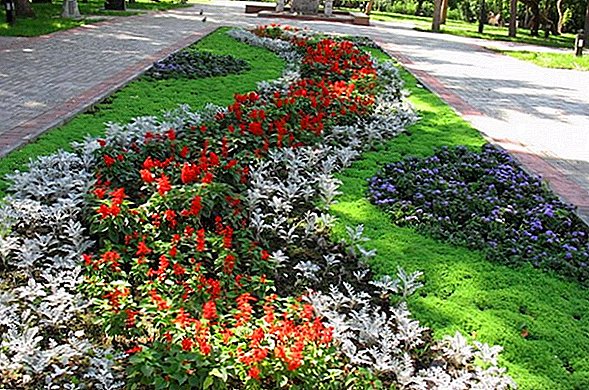
- continuous flowerbed stretches for many meters, most often used for large urban gardens.

By location
Asymmetric flower beds are planted near the fence, with low plants in front of high ones. And near the symmetrical flower beds on the sides have tracks.
On the basis of such perennials as tigridia, babian, phlox, cabiosa, gaillardia, astilba, feverfew, gelenium, geranium, vatochnik, hibiscus, catnip, kosmeya, rudbeckia, ghazania, aster, host, sage, gypsophila, anemone, you can create a variety of original options flower beds
By types of plants
Some flower beds make out only for the season, therefore they use annual plants, others - for several years and only from long-term representatives. It is impossible to say which species is more correct. It all depends on the personal vision of the designer and his understanding of the process.
By color range
If we talk about the colors of the flower beds, then there are:
- contrasting - alternating several motley colors;
- monochrome - in this case, with simultaneous flowering, no more than three primary tones are produced, but different shades are allowed.

Important! Picking up flowers for contrasting rabatki, you should not get too carried away. Thus, you can lead to a strong diversity that will only repel.
By height and tiering
There are flower beds and the number of levels:
- single-tier - in it flowers of the same height and combined into a single cover;
- bunk - when placed in the center of tall flowers, and on the sides - stunted;
- stacked - when the plant is placed with a decrease to the front side of the ridge. This is a difficult and lengthy process in which the most important thing is extremely accurate design.
Bunk and stacked flower beds are perfect for a smooth transition to the hedge.
Create a do-it-yourself rabatka
Now, step by step, we will deal with how to personally build the rebate. 
Planning and creating a project
Start by developing a plan:
- flower bed width - not less than 1m;
- minimum length = its triple width;
- per 1 m² there can be a maximum of 9 creeping or low-growing flowers, 4 high, 5 - of medium height and pomp;
- certainly dilute the planting with bushes after a certain distance. For extended beds the most optimal is 6 m.
Selection and preparation of the site
For such a flower bed the best option is flat horizontal areas or gentle slopes without irregularities.
Operating procedure:
- Mark the flower bed with sticks and ropes.
- Cultivate the land with a preparation against weeds, let them dry.
- Remove dead plants.
- Remove the top layer of earth (up to 15 cm).
- Dig another 10 cm area.
- Mix the removed soil with sand, peat, fertilizer (the proportion depends on the type of soil).
- Pour it all in place of the future flower beds, leveled.
- Well water the area.
- Let the earth sit down a little.

Selection and planting flowers
Which flowers to choose and how to plant them is just your decision.
But still there are some recommendations:
- more attractive look flower beds, where the bright shades are combined. But remember - the more varied the colors, the simpler the forms should be. The lush flowering of many contrasting shades is advised to be placed in stripes, but if you use only a few species in a single scale, the most intricate geometric shapes will look most impressive;
- making out a flower bed even from annual flowers, consider the moment of their flowering, so that in the future there will be no ugly voids or fast and simultaneous flowering. There should be no discordant contrast, when the flowering of one species is replaced by another;
- for bunk and multi-tiered options, it is imperative that improperly planted higher and lush plants do not cover small ones, because they add zest to the overall composition.

Important! When choosing colors it is better not to use aggressive views. Small that they require more frequent care, but also supplant other flowers that grow nearby.
When the land is ready, and the flowers are selected, make a marking on the flower bed for each group of flowers, determine their number in each separate part and plant flowers according to the project.
Competent care for rabatka
It is important to water the flowerbed in time and also carry out weeding. Must not forget about feeding. With the onset of autumn, annual plantings need to be removed from the territory, and perennial trimmed.
If you want to decorate your plot, you will probably be interested in reading about how to make a dry stream, fountain, gabions, ladybug, wattle fence, as well as how to decorate a stump.
Flowers that you decide to leave for the winter, you need to inspect: remove the diseased, and healthy ones - leave for the winter or transplant if necessary. To protect the root system from severe frosts, it is recommended to wrap them well. 
Errors novice florist
The most important mistake in the design of rabatki - the desire to make it very large and rich in different colors. But here you need to remember about harmony, because the flowerbed should first of all attract with its appearance. Start with small paths, on the sides of which you plant narrow, but neat flower beds.
The second mistake is the wrong place. Due to the shape of the flower bed, one part of it can always be in the shade, the second, on the contrary, in the sun, in some part it will be dry, and in the opposite part it will be wet. Because of this, the aesthetics of the flower bed can suffer greatly.
Therefore, very accurately calculate the distance between the plants that carry the shadow, and those that love the sun. Also consider how to alternate between moisture-loving flowers and those that prefer well-drained soil. You can choose and picky flowers, they easily endure different conditions and any neighborhood.
Ready schemes rabatok
Schemes for rabatok can be very diverse, it all depends on your imagination and capabilities. For example, we provide you with two ready-made schemes.  Scheme 1
Scheme 1
We advise you to read about how to make a rose garden, rockeries and mixborders at the dacha.
 Scheme 2
Scheme 2
Did you know? Some flowers are eaten. For example, dandelions are made from salads (the main thing is to soak them). Chicory can replace coffee. Soups are boiled from the lotus root, and jelly is made from violets.
Rabatka is a very interesting solution for a flowerbed, but it is worthwhile to approach this matter responsibly and seriously. After all, the beauty of the future flower garden depends on your attitude. If you calculate everything correctly and land it, this bed will not cause you much trouble.








